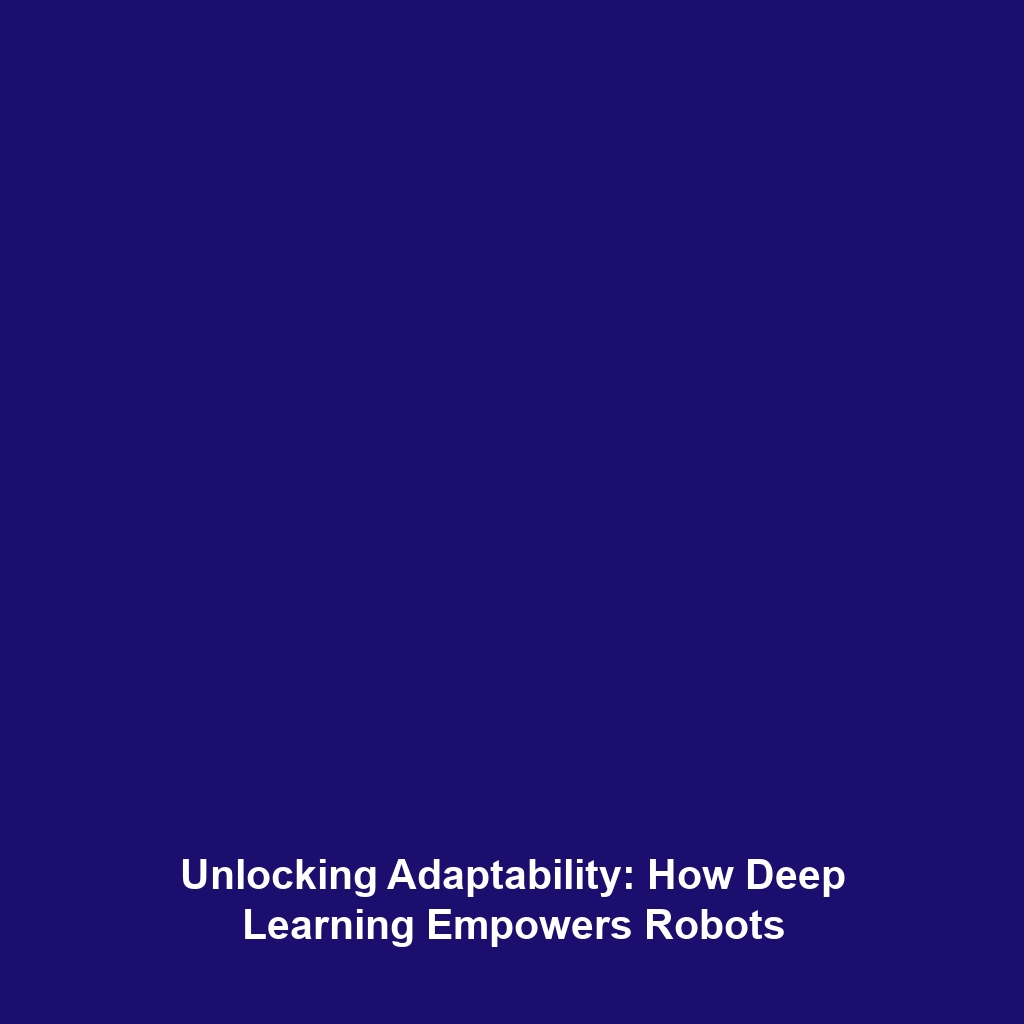How Deep Learning Allows Robots to Adapt to Complex Environments
Introduction
In recent years, deep learning has emerged as a transformative force in the field of autonomous robots. By providing machines with the capability to learn from vast amounts of data, deep learning enables robots to recognize patterns, make decisions, and adapt to complex environments. This advancement is not just significant; it is essential for the evolution of robots capable of performing in unpredictable settings, from homes to hazardouswork zones. Understanding how deep learning empowers robots in these challenging scenarios is critical for the future of robotics and automation.
Key Concepts
Understanding Deep Learning
Deep learning is a subset of machine learning that uses neural networks to simulate human decision-making. This process allows autonomous robots to analyze intricate data inputs from sensors and cameras, enabling them to:
- Identify and classify objects in real-time.
- Understand spatial relationships within their environment.
- Learn from past experiences to improve navigation.
Autonomous Robots and Their Environments
In the category of autonomous robots, adaptability is crucial. These robots must function efficiently in environments that may change unexpectedly. The integration of deep learning algorithms allows these machines to process sensory information and adjust their behavior dynamically, making them incredibly versatile.
Applications and Real-World Uses
Deep learning enhances the functionality of autonomous robots in several important domains:
- Manufacturing: Robots equipped with deep learning can adapt to varying production lines, ensuring quality control and efficiency.
- Healthcare: Surgical robots utilize deep learning to adapt to changing anatomical landscapes during procedures.
- Autonomous Vehicles: Deep learning empowers self-driving cars to interpret their environment and make split-second decisions to navigate safely.
These applications of deep learning in autonomous robots underscore the technology’s potential to revolutionize multiple industries.
Current Challenges
Despite the advancements, there are notable challenges associated with the application of deep learning in autonomous robots:
- Data Dependency: Deep learning algorithms require vast amounts of labeled data, which can be costly and time-consuming to gather.
- Computational Requirements: Training deep learning models requires significant computational power, which may not be feasible for all robotic systems.
- Safety and Reliability: Ensuring that robots make safe decisions in complex environments is a major concern.
Addressing these challenges is crucial for the continued integration of deep learning in autonomous robotics.
Future Research and Innovations
Research is ongoing to enhance the capabilities of deep learning in autonomous robots. Some future innovations may include:
- Transfer Learning: This method allows robots to adapt their knowledge from one task to another with minimal data.
- Explainable AI: Developing transparent and interpretable models that provide insights into robot decision-making processes.
- Edge Computing: Reducing reliance on cloud processing by enabling rapid data analysis on-device.
These breakthroughs promise to enhance the functionality and safety of robots operating in complex environments.
Conclusion
Deep learning stands as a foundational technology enabling modern autonomous robots to adapt to complex and ever-changing environments. From improving real-time decision-making to paving the way for future innovations, the implications of deep learning are vast and transformative. As research advances, the role of deep learning will undoubtedly grow, ensuring robots become even more capable and integrated into our daily lives. For further insights on robotics and artificial intelligence, explore additional resources on our website.

